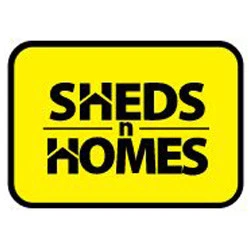
Benefits of upholstering
Upholstering furniture can involve much more than simply changing the fabric on your furniture.
Read more
Roofing: concrete tiles or Colorbond steel?
Whether you’re building, renovating, or doing repairs, it’s worth reconsidering your roof. The best fit for your home and lifestyle isn’t always immediately apparent, and there are plenty of factors to consider. The most popular roofing materials in Australia are concrete tiles and Colorbond steel.
Read more
Insulating Your Home
Insulation is essential to keep your home cool in summer and warm in winter. By installing insulation you will effectively keep your heating and cooling bills down and reduce greenhouse gas emissions.
Read more
Energy Saving Tips for the Home
Most of us at some point have suffered from Bill Shock when we have opened the house hold utility bills.
Read more
Home heating options in a nutshell
There are several options when it comes to heating your home, and the right choice will depend on your individual circumstances. Before you even consider which type of heating system will be right for you, consider how you can make your home more efficient at retaining heat. Overlooking this step could cost you dearly in the long run, resulting in the need for a more powerful heater which perpetually struggles against cold draughts and escaping heat.
Read more
How to choose a staircase
There are many homes throughout Australia with staircases and in some more than one. A staircase can be tucked away and unobtrusive or can be a focal point and add real wow factor to your home. Taking regulations and guidelines into account your staircase can then only be limited by space, budget and imagination.
Read more
5 Types of Wall Lighting - How to Choose the Right One for Your Home
When selecting the perfect bathroom wall light, quality of the fixture and its ability withstand exposure to moisture is key. Bathroom wall lights ideally need to have an IP Rating of at least IP44 to ensure they are protected from the regular exposure to moisture that comes with regular bathroom use.
Read more
Rain Water Tanks
Each Australian on average uses 53,000 liters of water per year. That sounds like a lot but we probably don’t stop to think about the many ways we use water and how the consumption can add up.
Read more
Electrical technology for the bedroom
Bedrooms are a personal space where you sleep, study, or just retreat for some quiet time. Modern electrical technology helps to make this special room more livable and functional without adding to your power bills or cluttering up limited space. So what could your bedroom use to make it even more comfortable? This article has the answers.
Read more
Installing a new hot water system
Installing a new hot water system can be a daunting task if you aren’t knowledgeable about your options. But because hot water is such a large part of your power bills, it’s worth doing your research. Here we’ve described each type of hot water system and storage options. Contact an appliance repair and installation company to discuss installing your new system.
Read more
6 interior decorating tricks to transform your house into a home
Small details and personal touches really make the difference between a house and a home. With a little bit of imagination, creativity and clever use of key items, you can really make your mark on your living space, making it feel more homely. After consulting with a team of interior stylists, we’ve put together 6 tips that are essential for giving your space some personal style.
Read more
Avoiding a DIY disaster – When to call in the professionals
Not every job requires professional help, especially if you are willing to put some time and effort into learning how to do a project properly
Read more
Warning signs of pest infestations to look out for while house hunting
Check open spaces for anthills, window frames for wasps nests, trees for termite nests, and sheds and trees for possum nests. Be on the lookout for other evidence that pests are living there such as droppings under trees and the skin being eaten off lemons on fruit trees. Secondly, observe greenery in the area. If there are damaged plants or patches of grass pests may be to blame.
Read more
Buying sustainably and how to do it effectively
Do you wish you knew how to shop for pieces that veer towards the sustainable side of things? Buying environmentally friendly items can be hard to spot without asking a million questions, and although these types of questions are always welcome it’s nice to have some knowledge before hitting the shops. Let’s look at some of the criteria to spot an eco-friendly choice.
Read more
Check your plumbing for leaks
Leaks in plumbing can be silent and hidden, but they are capable of massive amounts of damage. Ceilings, floors, walls, and the structural integrity of your home can be damaged by even a small leak, causing thousands of dollars of damage. The best course of action is to find any leaks as soon as possible and fix them before any further damage can occur. Follow these steps to determine if you have any leaks and identify their source.
Read more
House Inspections: Uncovering Hidden Problems and Potential Solutions
A qualified building inspector often holds certifications from recognized industry bodies, ensuring they follow standard procedures and guidelines. For example, in Australia, inspectors may be licensed by the Queensland Building and Construction Commission (QBCC) or hold accreditation from the Australian Institute of Building Surveyors. These certifications validate the inspector's expertise and ability to provide a thorough, reliable assessment.
Read more
Exterior Painting: Why, When, and How
Painting the exterior of your home is an affordable way to make a big positive change in how it is perceived. When completed by professionals it will look great and protect your home from the elements for years to come.
Read more
Light Up your Life with LED’s
Did you know that lighting is approximately 20% of a household energy bill?
Read more
The Modern Day Butler’s Pantry
The traditional Butler’s Pantry has evolved over many years from what were a series of rooms such as the scullery, pantry and larder where each stage of food preparation and clean up was conducted. These rooms were eventually condensed into one room being what we would now call a kitchen.
Read more






























































